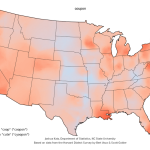Counting languages is difficult for several reasons. First, there are still uncontacted tribes who speak undocumented languages, so the number could increase. Second, language endangerment and language death is causing rapid loss of linguistic diversity, such that over 50% of the world’s languages are expected to be extinct by 2100, and there’s a good chance linguists have already missed the opportunity of documenting hundreds, if not thousands, of languages which have already died.
Politics and culture also sometimes make classifying languages and dialects difficult. For example, there are nearly a dozen distinct, yet related, Chinese languages. They’re as different as Spanish, French, and Italian. Yes, they share a common ancestor (just as the Romance languages descended from Latin), but they are no longer mutually intelligible. Mutual intelligibility is the criteria linguists use to determine whether two varieties are a language or a dialect, so under this definition they are different languages. However, the Chinese census counts them as dialects of the same language, in order to portray China as a unified country.
The opposite can happen too. Hindi and Urdu are mutually intelligible. They are dialects of the same language. However, since they’re spoken in different countries, by people who largely use different writing systems and follow different religions, many people consider them to be different languages!
All in all, most linguists agree there’s somewhere in the ballpark of 7,000 languages in the world, and @AllTheLanguages is tweeting about them all!

